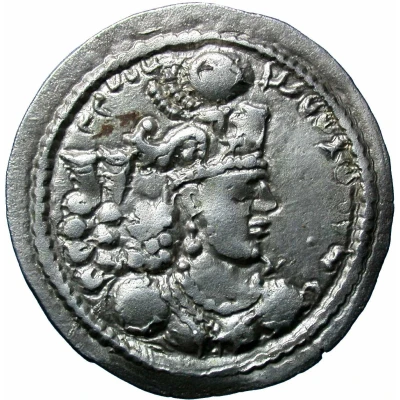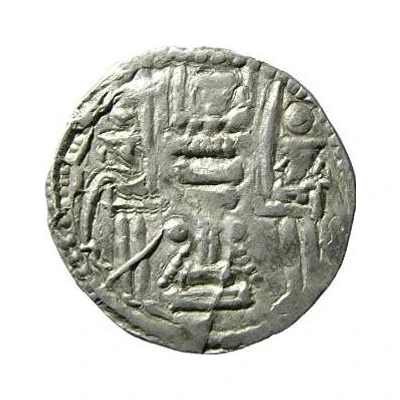


Drachm - Hunnic tribes Kidarites Sassanian style, Varhran /Bahram/ IV imitation, Taxila
| Silver | 3.53 g | 26 mm |
| Issuer | Kidarite Kingdom |
|---|---|
| Type | Standard circulation coin |
| Years | 388-399 |
| Value | Drachm (1) |
| Currency | Drachm (380-477) |
| Composition | Silver |
| Weight | 3.53 g |
| Diameter | 26 mm |
| Shape | Round (irregular) |
| Technique | Hammered |
| Orientation | Coin alignment ↑↓ |
| Demonetized | Yes |
| Updated | 2024-10-10 |
| Numista | N#150923 |
|---|---|
| Rarity index | 97% |
Reverse
Fire altar
Edge
Plain
Comment
SNS III Vahram (Bahram) IV type Ib1/3 (cf. pl. 33, A1); Göbl, Dokumente pl. 6, VII, 4; FPP fig. 82, 5 (on right), accompanied by the following historical background description: "This type, imitating Vahram (Bahram) IV, is well known from hoards found in the vicinity of Taxila. At the beginning of Vahram's reign in AD 388, Taxila was separated from the Sasanian domain by the Kidarites, who soon took control of the important trading center circa AD 390. As such, this issue is not a Sasanian issue, but one struck while the city was under the control of the Kidarites. The Kidarites were known to have imitated coinage of other cultures as well as striking their own types, and some of those imitations are certainly of Sasanian types…"This type, imitating Vahram (Bahram) IV, is well known from hoards found in the vicinity of Taxila. At the beginning of Vahram's reign in AD 388, Taxila was separated from the Sasanian domain by the Kidarites, who soon took control of the important trading center circa AD 390. As such, this issue is not a Sasanian issue, but one struck while the city was under the control of the Kidarites. The Kidarites were known to have imitated coinage of other cultures as well as striking their own types, and some of those imitations are certainly of Sasanian types.
Interesting fact
One interesting fact about this coin is that it is an imitation of a Sassanian coin, which was a common practice among the Kidarite tribes. The Kidarites were a group of nomadic people who lived in the region that is now modern-day Pakistan and Afghanistan, and they often imitated the coins of the Sassanian Empire, which was a powerful and influential empire in the region at the time. This imitation coin was likely made to circulate among the Kidarite people and was used as a form of currency. Despite being an imitation, the coin still holds historical value and provides insight into the economic and cultural practices of the Kidarite tribes.



